Montreal is a city of unique intersections.
As the capital of Quebec, it’s an important political and cultural hub where the French-Canadian lifestyle comes into clear focus.
But that’s just the tip of the iceberg.
All at once, Montreal is romantic, lovely, and historical, while also being home to diehard Habs fans and leagues of poutine lovers. From its architecture to its festivals to its fashion sense, the city is both non-pretentious and bold.
Here’s a pretty way to summarize the cool-chic nature of Montreal: It’s the birthplace of the world-famous Cirque de Soleil. It also hosts the world’s largest jazz festival (sorry, New Orleans).
Whether sipping hot chocolate at lovely cafes or slamming poutine after a late night, Montreal offers a European-style air without losing touch with its homegrown roots.
The best part? Montreal is deceptively affordable.
To get the most out of your trip, you’re going to want to stay close to the action. Below, you find the best Airbnbs in Montreal, including lux, historical, and budget picks.
Best luxury rental: Pristine Penthouse
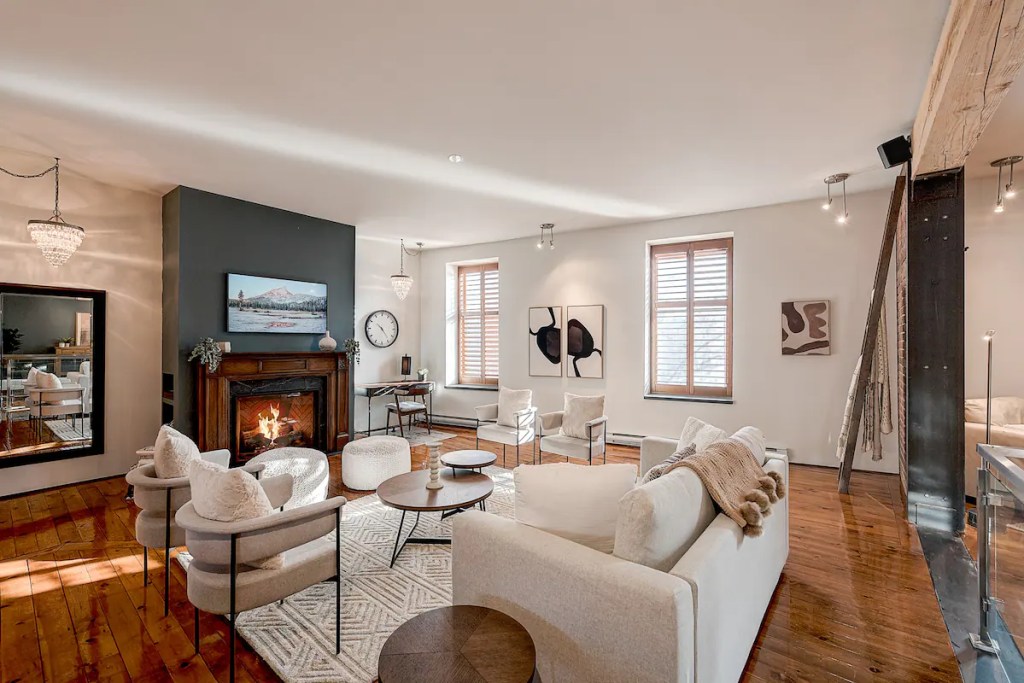
Exposed brick, stately fireplaces, and wrought-iron spiral staircases that lead onto patios—need I say more? On top of its unique features, this beautiful penthouse has an industrial design that somehow feels warm thanks to its décor.
While I’m wholly sold on the design and atmosphere of this penthouse, it also has a wonderful location that’s only ten minutes from downtown and Old Port. Its open floor plan also makes it a great choice for families or friend groups that plan on spending a lot of time together at their home away from home.
Best location: Plaza10
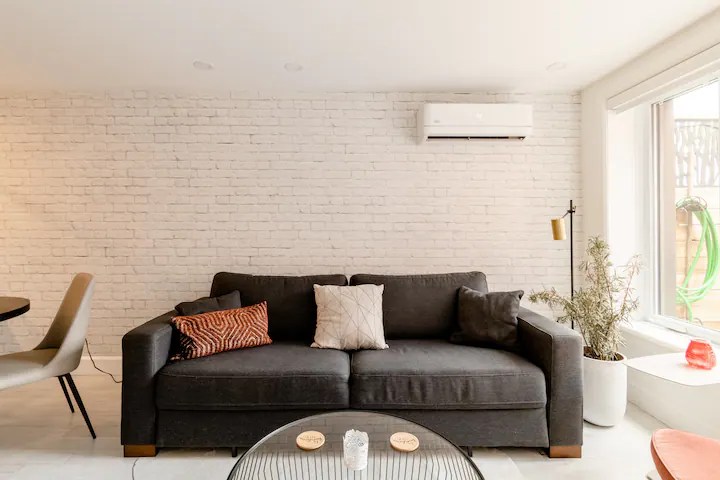
This sleek and bright apartment has all the basics you’d want from a hotel stay. I mean that literally, as this apartment is fully serviced.
(Never heard of these types of stays? They’re called apart-hotels. I’ve stayed at them before—they’re great.)
Solid amenities and features aside, this rental is located right in the heart of La Petite Patrie—which is arguably Montreal’s coolest district. Restaurants, bars, and shops abound in this area, giving you direct access to the hippest streets and nightlife in the city.
Best for staying on foot: The Urban Chalet
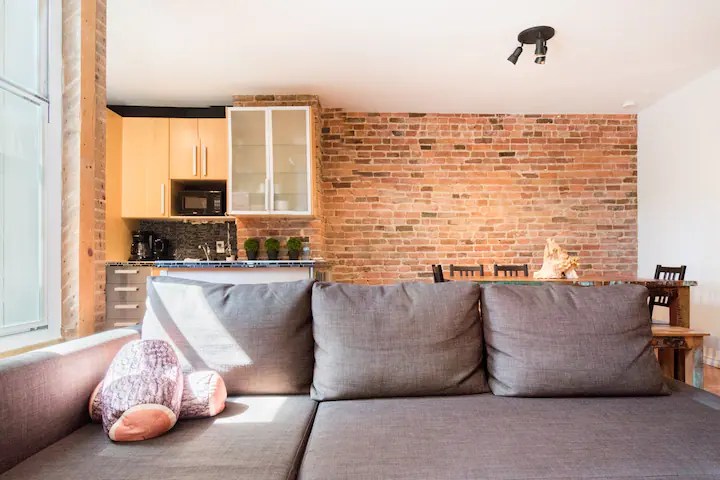
Along with La Petite Patrie, visitors also love to visit Montreal’s Central Plateau neighborhood. The Urban Chalet places you smack in the center of its eclectic and energetic streets.
No need to drive or even step foot into a taxi. Along with plenty of pedestrian fare, the Central Plateau area is also surrounded by metro stations.
The rental also offers all the kitchen basics, including options for making coffee, and a few resources for parents, including a crib with bedsheets. But my favorite feature has to be the balconies—there are two for visitors to choose from when they want to people-watch or unwind.
Best historical rental: Sonder Lambert
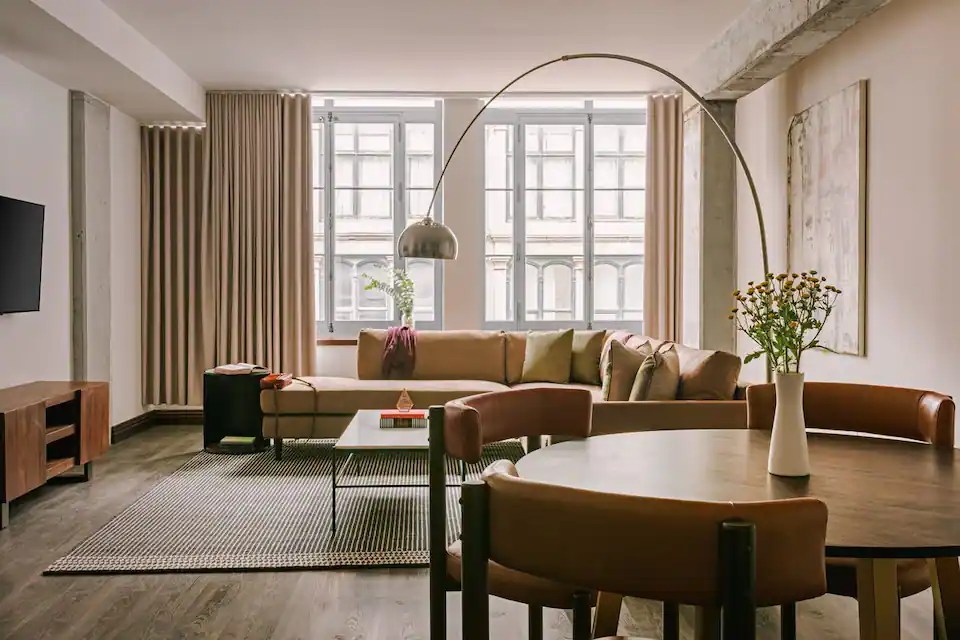
Sonder Lambert looks like a dream. The interior brings to mind the vast lofts common to New York City’s Soho neighborhood—and even the exterior, too.
The building dates back to 1874 with a newly restored (and original) stone façade. Even the streets are still cobbled, offering a unique look into Montreal’s Old City.
I’m fully sold on the apartment’s location and its textural, earthy design. But I’m also a fan of the rental’s super-fast Wi-Fi, which makes this option great for those who need to get some work done… or even take a few international video calls.
Best budget option: Entire Home
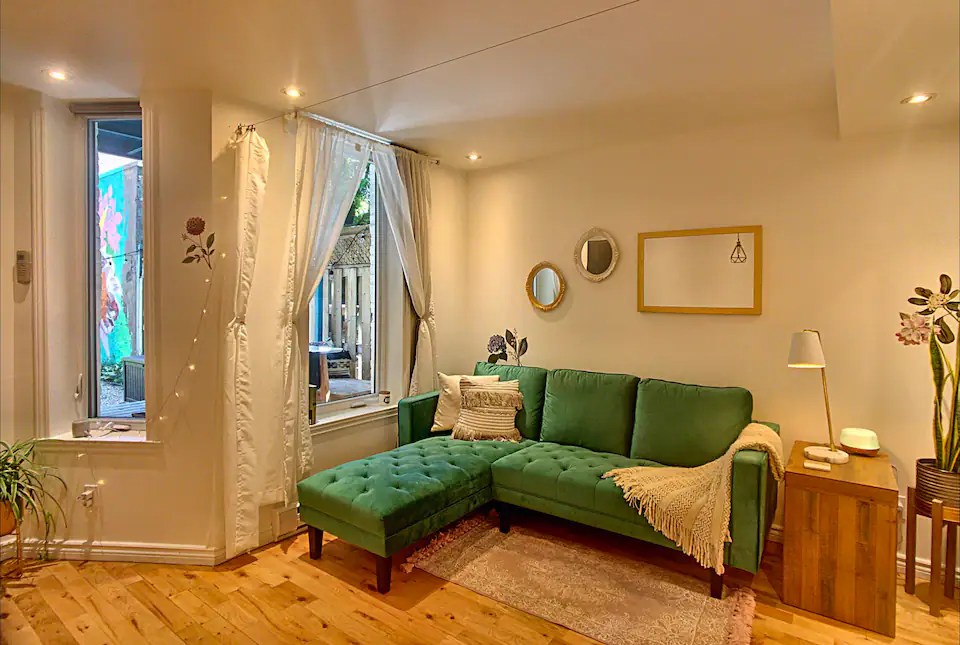
This charming home is surprisingly cheap at less than $100 per night. On top of that, it’s highly rated by guests with a sterling 5.0 rating.
Along with a sunroom-dining area, the apartment comes with a fantastic backyard that’s fit for grilling and dining. There’s even a colorful mural from a local artist.
Despite the rental’s affordability, it’s located by a metro station that heads straight into Old Montreal, Little Italy, and other popular spots. But you might not need want to venture out, as the Plaza Saint-Hubert area is already home to popular shops and cafes.
Best modern rental: 409 with Mountain Views
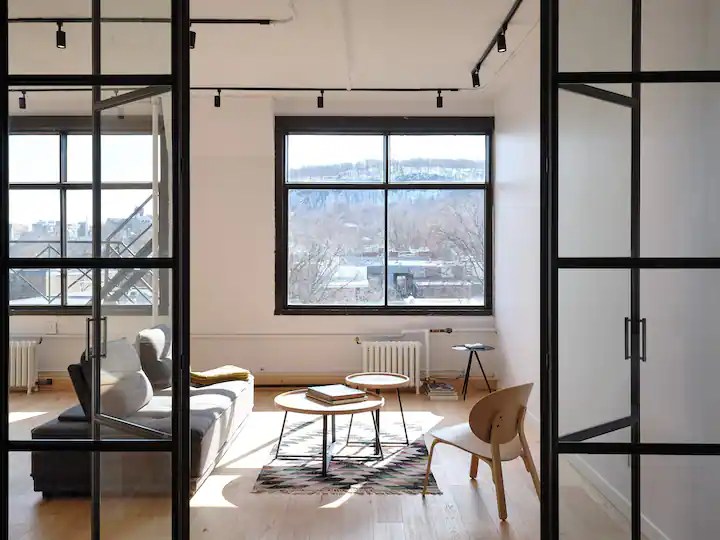
I’m not usually a fan of hyper-modern design, but this apartment sticks the landing. The construction includes French Doors made of glass that create a modular but breathable feel.
Its minimalist approach is clutterless, which draws attention to the windows and the view of Montreal’s surrounding mountains.
It feels larger than life and removed from the city—but it’s actually located right in the heart of the Plateau district. And despite its emphasis on clean, modern design, the apartment is located in a building that’s well over a century old.